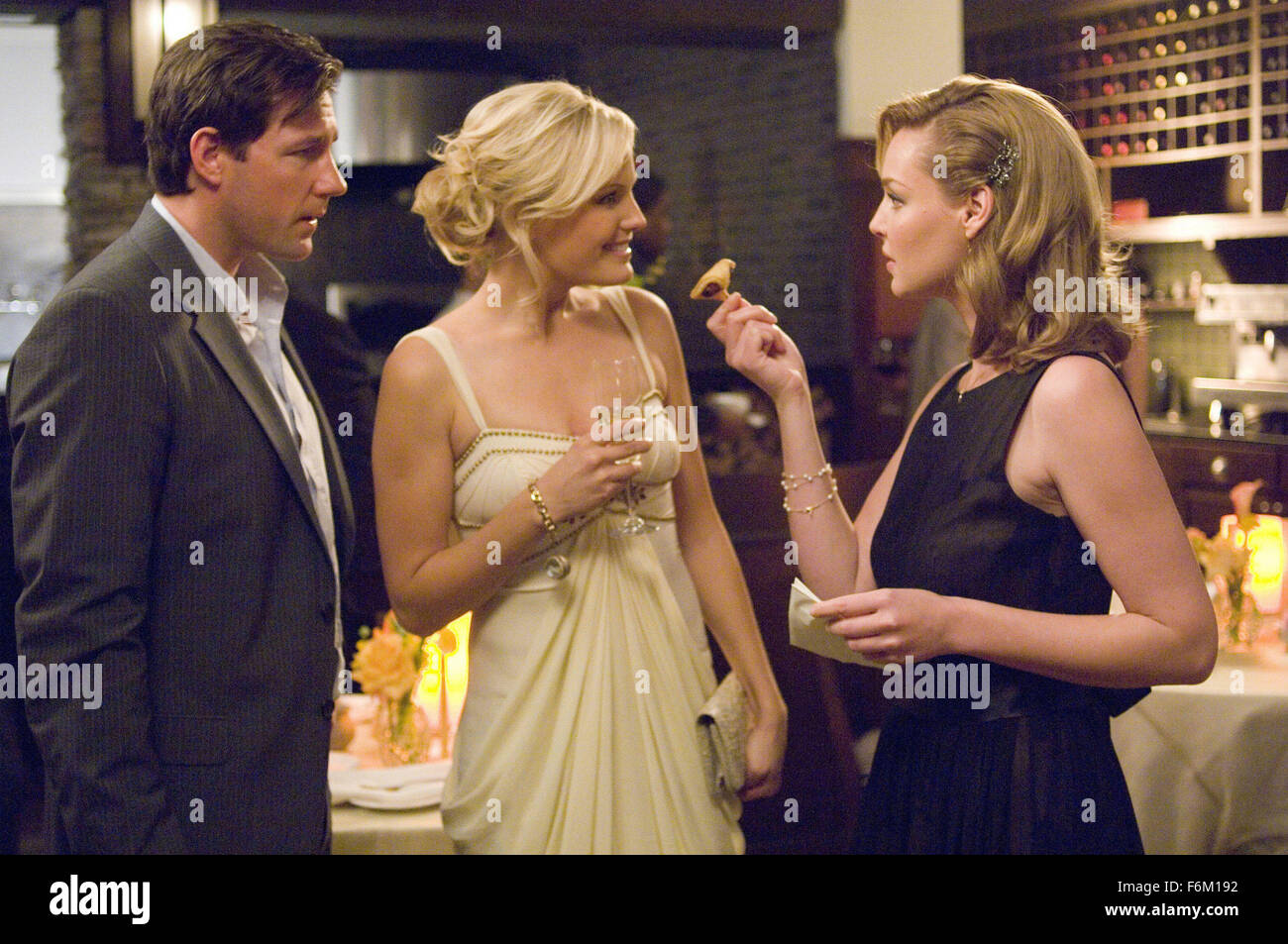Cast For 27 Dresses - Connecting Your Favorite Screens
Imagine settling in for a cozy evening, perhaps with a favorite show or some pleasant tunes, and you think about getting that experience onto a bigger display, a television perhaps. You might find yourself wondering how to move what's on your smaller device, like a phone or a tablet, over to the larger screen in your living area. It's a common thought, you know, when you want to share something or simply enjoy it on a grander scale.
Moving your digital bits and pieces from a pocket-sized screen to a larger one, like your living room television, is actually simpler than it might seem at first glance. There are, it turns out, some really helpful ways to make this happen, allowing your pictures, videos, and sounds to stretch out and fill a bigger space. It's all about making your content more accessible and enjoyable for everyone watching, or listening, together.
This handy way of sharing content from your personal devices brings a lot of ease to your entertainment setup. You can, for instance, use your phone, which is already a very personal item, to direct what shows up on your television, turning it into a kind of remote control for all your media. It gives you quite a bit of freedom, you see, to pick and choose what plays next, right from where you are sitting.
Table of Contents
- What's the Big Deal with Casting Your Screen?
- How Does Your Phone Become a Smart Remote?
- Why Does Audio Sometimes Play on Your Computer?
- Is Casting Just for Videos and Music?
- What Devices Can You Cast From?
- What Happens When You're Connected?
- Where Can You Find More Help with Casting?
- A Quick Look at Google TV and Casting
What's the Big Deal with Casting Your Screen?
Sending your screen's picture from one gadget to another is, in a way, a very cool trick. It lets you take whatever you're seeing on your smaller device, say a laptop or a phone, and show it on a much larger display, like your living room television. This is particularly useful for sharing photos with friends, watching a movie with the whole family, or even showing off a presentation without needing a bunch of wires. It's about making your digital world feel bigger and more communal, you know, for everyone to enjoy.
Sometimes, when you send your screen's picture over, the sound could come through on your computer instead of the television. This might happen because of how your computer's sound settings are set up, or perhaps it's the default behavior for that particular kind of connection. It can be a little surprising when you expect the sound to fill the room, but it stays quiet on the big screen, still playing from your laptop speakers. So, it's something to keep an eye on when you're getting things ready.
Getting Your Content to the Big Screen
To have the sound on your television set instead, you just need to send the browser window you are using. This is a neat little trick that changes where the sound goes, making sure it comes out of the speakers connected to your television. It's a simple adjustment, really, that makes a big difference in your viewing experience, allowing you to get the full audio-visual effect on the larger display. You might find this very helpful for movie nights.
The process usually starts by opening up your Chrome browser on your computer. This particular web browser has features built right into it that make this kind of content sharing pretty simple to do. It’s a common starting point for many people looking to get their digital media from their computer onto a television. So, that's where you'd begin, just opening up that familiar browser window.
Once Chrome is open, you’ll look towards the upper right corner of your browser window. There, you will select the option for more things. This little button or symbol usually looks like three dots stacked on top of each other, or perhaps three lines. It's a universal sign, basically, that tells you there are more choices or settings hidden away that you can pick from. This is your gateway to finding the feature you need to send your content.
How Does Your Phone Become a Smart Remote?
When you send content from your phone, that handheld device becomes your own special way to direct things. It's like having a personalized control panel right in your pocket, giving you command over what plays on your television. This means you can look around for new things to watch, start things, stop them for a moment, and even put together lists of what you want to watch or hear, all from the comfort of your couch. It's incredibly convenient, you know, not having to get up to change things.
This idea of using your phone as a remote control is pretty clever. It means the device you carry with you everywhere already has the ability to manage your home entertainment. You're not just watching things; you're actively picking and arranging your viewing experience with a gadget you're already very familiar with. So, it feels quite natural to use, really, making your entertainment setup feel more connected to your daily life.
The Power of Your Pocket Device in Casting
The capabilities extend to a wide array of personal gadgets. You can send content from Android-powered flat devices and handheld phones, Apple phones, and Apple flat devices. This wide range of compatible items means that many people can take advantage of this easy way to share content, no matter which popular mobile operating system they prefer. It’s pretty inclusive, in a way, allowing a lot of different users to connect their screens.
The ability to send content from such a variety of personal electronics means that the experience is quite flexible. Whether you're using a newer model or something a bit older, as long as it's one of these common types of devices, you're likely able to get your media onto a bigger screen. This makes it a very accessible feature for many households, you see, without needing to buy special equipment just for this purpose.
Why Does Audio Sometimes Play on Your Computer?
It's a common scenario: you send your screen's picture to the television, but the sound continues to come from your laptop speakers. This often happens because the system might default to keeping the audio source on the sending device, especially when you are simply mirroring your entire computer screen. Your computer, basically, still sees itself as the primary sound output, even though the video has moved. So, it's a setting that needs a little nudge to change.
The reason for this behavior can be tied to how the connection is first made. When you send the whole screen, the connection focuses on the visual aspect, and the audio pathway might not automatically switch over to the television's speakers. It's like the video signal takes the express lane, and the audio signal stays on the local road, you know, still playing from your computer. This is why a specific action is needed to redirect the sound.
Making Sure Your Sound is Where You Want It
To make sure the sound comes out of your television instead, the trick is to send just the browser window, or "tab," as it's often called. When you send a specific tab, the system typically understands that both the visual and auditory parts of that particular content should go to the television. This is a subtle but important difference in how the connection is handled. It ensures that your sound is exactly where you want it to be, filling your room with the audio from your big screen, which is quite nice, really.
This specific method of sending a tab is a simple yet effective solution for controlling audio output. It gives you a way to tell your devices precisely where the sound should go, avoiding any confusion or split audio. So, if you ever find yourself watching a movie on your television but still hearing the sound from your laptop, remember that sending the tab is likely the quick fix you need. It's a useful bit of knowledge, you know, for a smoother experience.
Is Casting Just for Videos and Music?
While sending moving pictures and sounds is a very common use for this kind of connection, it’s not the only thing you can do. The idea of sending your screen's picture means that pretty much anything you can see in your browser window or on your device's screen can be displayed on a larger television. This opens up a lot of possibilities beyond just entertainment, you see, for various activities.
For example, you could show a photo album from your computer to a group of people without everyone huddling around a small screen. Or, perhaps, you might want to display a recipe from a website while you're cooking, making it easier to follow along on a bigger screen in your kitchen. It's about making your digital life more flexible and shareable, which is quite handy.
Exploring More Ways to Cast Content
This Google Cast idea lets you see moving pictures on different gadgets and hear sounds through loudspeakers. It’s a system that’s built to be very versatile, allowing you to send various types of content from your personal devices to other displays or sound systems. So, it’s not limited to just one kind of media; it’s quite open to different forms of digital information, you know, making it very adaptable.
To begin sending the show, you simply press the small control in the program you are using. This means that the ability to share content is integrated right into many of the applications you already use for watching videos or listening to music. It’s a very user-friendly approach, basically, making it easy to start sharing with just a single touch or click within the app itself. This simplicity is a big part of its appeal.
What Devices Can You Cast From?
You can send what's on your phones, flat devices, or portable computers over to your Google TV. This means a wide range of common personal computing devices are capable of initiating this connection, allowing you to bring your content from a small screen to a much larger one with relative ease. It's pretty inclusive, you know, covering many of the gadgets people use every day.
The flexibility in device compatibility is a significant advantage. Whether you prefer a smartphone for quick browsing, a tablet for reading or light work, or a laptop for more involved tasks, you can likely use any of these to send your content to a Google TV. This makes the experience very convenient, as you don't need a specific type of device to get started. So, it's quite accessible for many users.
A Look at Compatible Devices for Casting
The methods for doing this might be a little different depending on the specific gadget you are using. Every phone, tablet, or laptop model can have its own slight variations in its settings or menu layout. This means that while the overall goal is the same, the exact sequence of buttons you

27 Dresses' Cast: Where Are They Now?, 60% OFF | rbk.bm

27 Dresses Cast in Real Life 2020 | Reviewit.pk

28 dresses cast - DotComStories